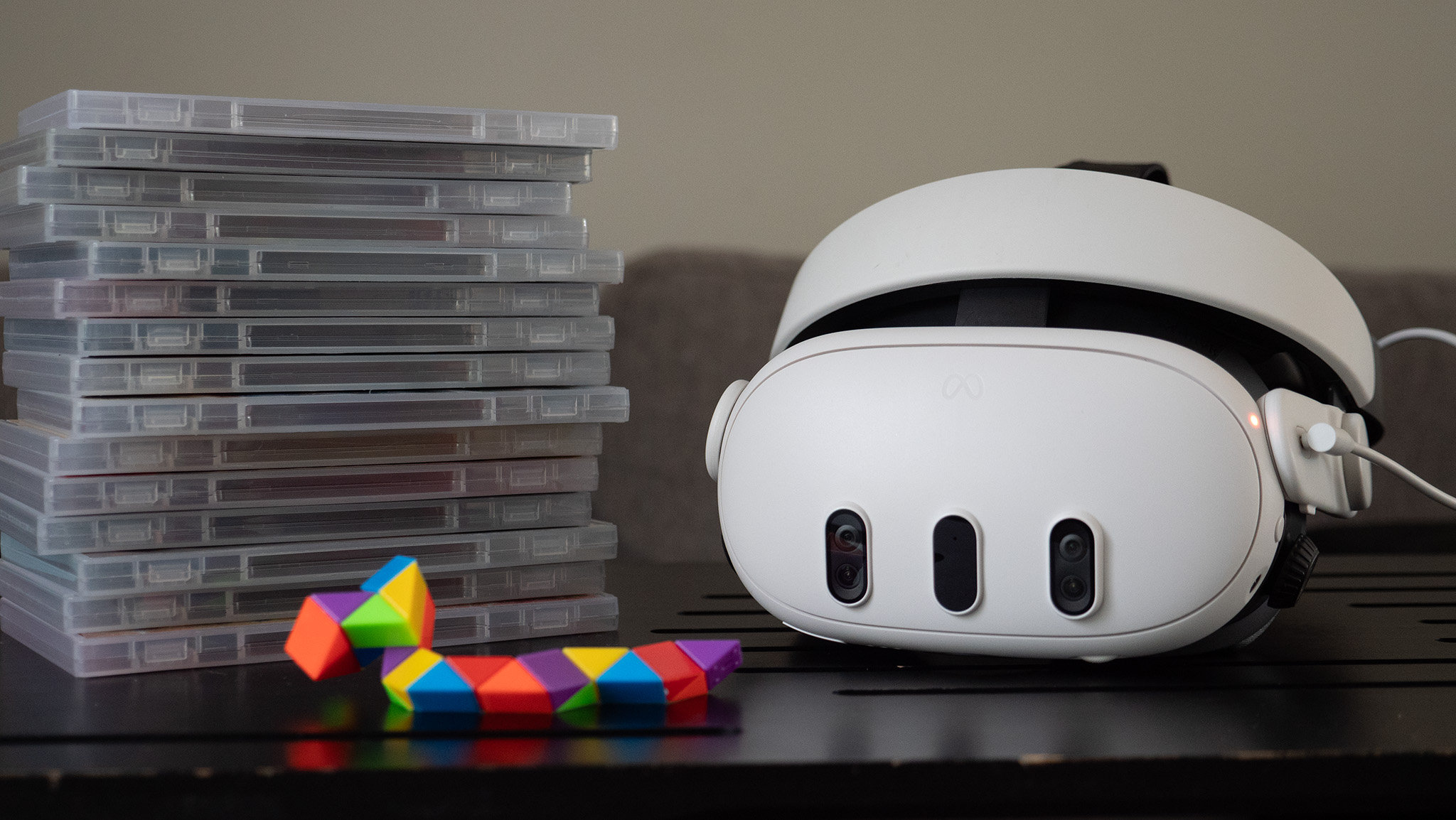Nexus 5, two months on ...
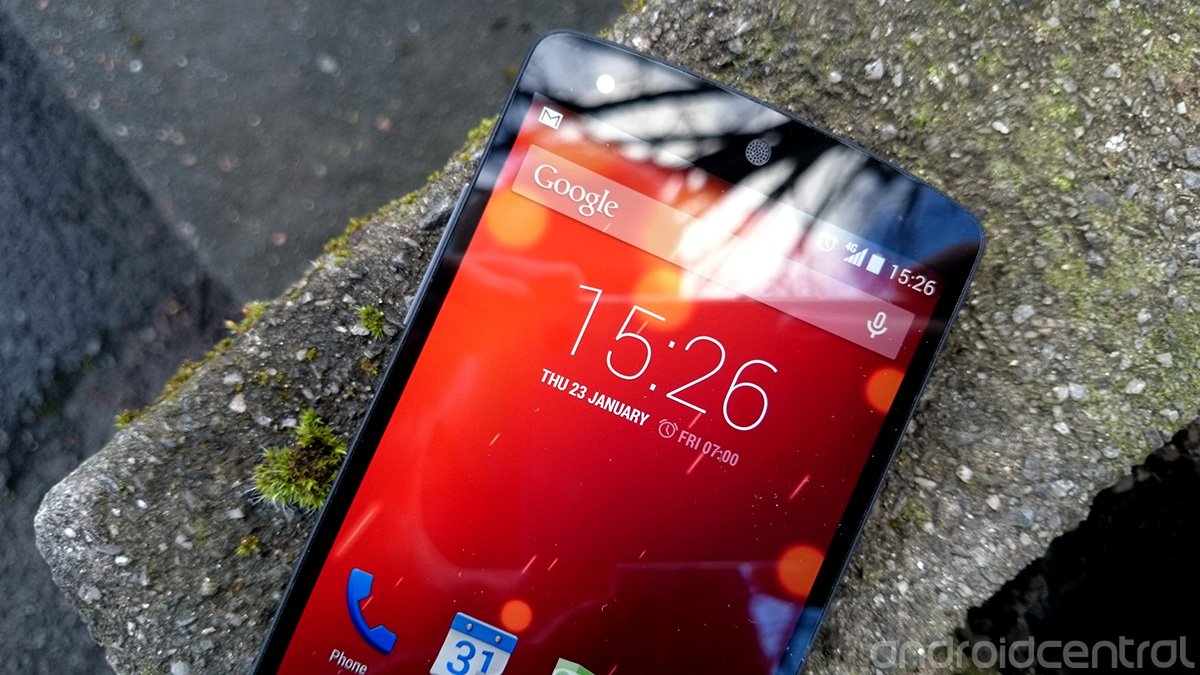
After two months of regular use, are we still enamored with Google's latest Nexus phone?
It feels like the Nexus 5 was a long time coming. A couple of days before the IFA conference in early September 2013, I remember being huddled over a MacBook in a hotel bar in Berlin with a handful of other journalists, squinting over a few frames from Google's KitKat unveiling video and trying to make out details on the back of this mysterious new Nexus phone. The two months that followed led us down a garden path of leaks, rumors and gossip as Google's next flagship slowly came into focus — culminating in a couple of high-profile snafus that gave us a full-size render of the phone, along with a mostly-complete spec list, days ahead of the official launch.
Yet when the Nexus 5 and Android 4.4 finally arrived on Nov. 1 — having been announced a day earlier, on Halloween — it turned out there was more going on than the pre-release rumors had revealed. Sure, the Nexus 5 was a high-spec'd phone at a relatively low price point. But more important was KitKat, the biggest change to Android in two years, delivering a brighter, flatter, more Googley smartphone experience. It was a big step forward for Google's OS, and one of the most important Android phones of the year.
Since launch we've had a good couple of months to get to know the Nexus 5 properly, using it both as a regular day-to-day smartphone, and as a daily driver during CES, one of the busiest trade shows of the year. The N5 is still a great phone, but the extra time with it has given us a fresh perspective. Check out our long-term thoughts after the break.
Utilitarian design, great ergonomics
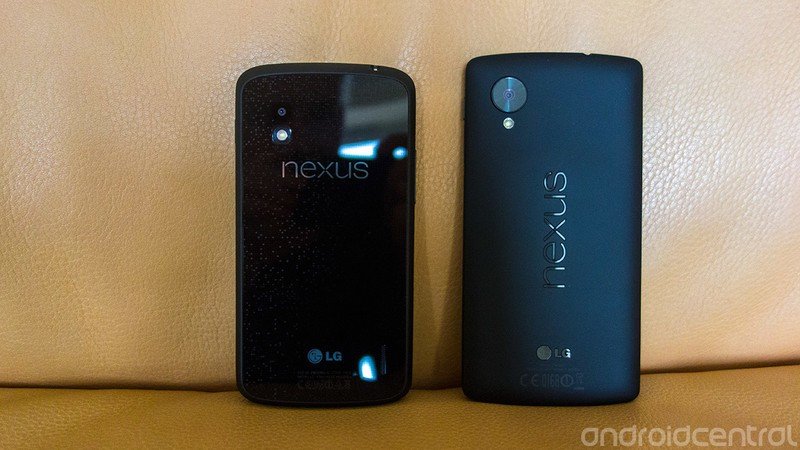
The Nexus 5 is nothing fancy to look at. Even compared to last year's Nexus 4, the design is utilitarian and unassuming — a black (or white) plastic slab with a screen on the front. As we said in our review, it's supposed to just get out of the way and let you focus on the display.
The phone's chassis has held up pretty well over the past couple of months. The back doesn't get scratched up like the Nexus 4's, and the only cosmetic damage I've picked up is minor — a ding on the plastic trim from an encounter with a Las Vegas tabletop (my fault, not the phone's), and a small scratch on the screen that's almost impossible to see. I'm more than happy with how it's held up.
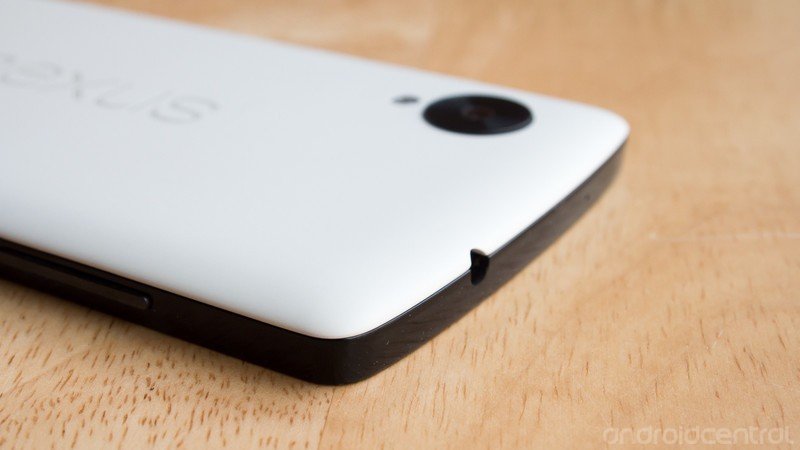
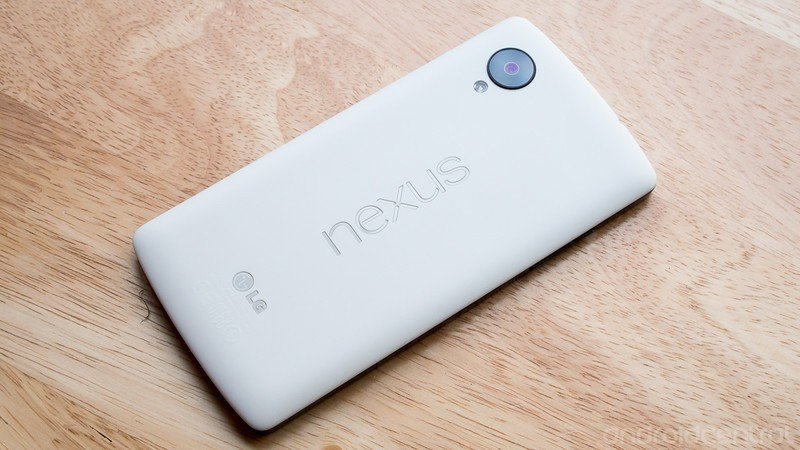
The general consensus is that the black Nexus 5 feels better in the hand.
I've been using a black Nexus 5 since launch, while occasionally hopping between other phones like the Sony Xperia Z1 and HTC One. The black N5 features a softer soft-touch finish to its back and sides, whereas the white model has a smoother plastic rear and glossy black sides. The general consensus is that the black version feels nicer in the hand, and I'd have to agree with that after seeing both side-by-side at CES. The white back may also be more prone to getting gunked-up and discolored over time, though that'll likely vary depending on how you use your phone.
Be an expert in 5 minutes
Get the latest news from Android Central, your trusted companion in the world of Android
The Nexus 5 is also one of the more comfortable phones I've used in the past year. It doesn't match the perfect ergonomics of the Moto X, but it's damn close, and you could even argue that the Nexus's flat sides make it easier to grip in some situations. The black does N5 tend to pick up lint when pocketed, but that's also true of most soft-touch-coated phones.
Still the fastest Android phone — but future-proof yourself with 32GB if you can
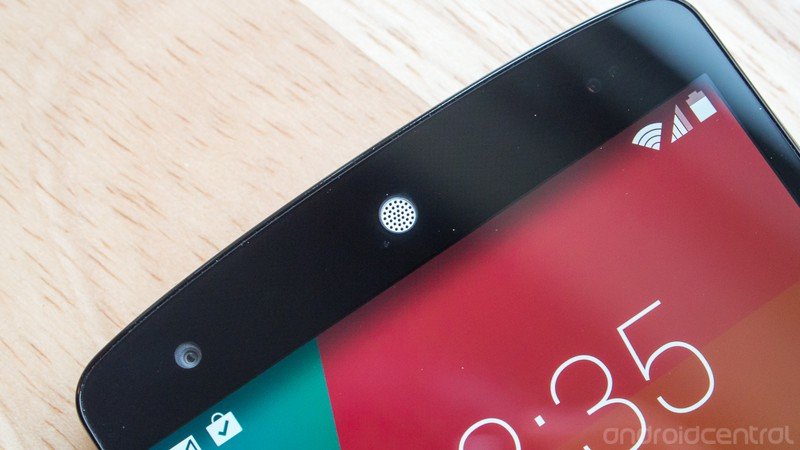
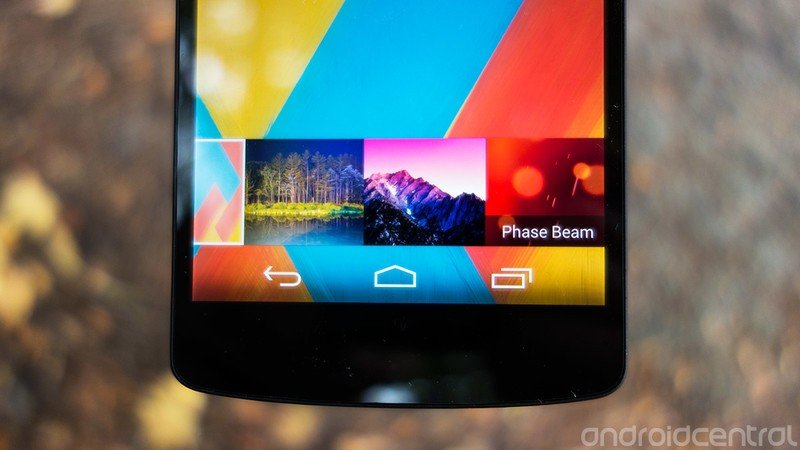
For the moment there's no Android phone that feels faster to use than the Nexus.
The speed of stock KitKat running on a Snapdragon 800 processor is tough to beat. We're sure to see this surpassed in the months ahead, but for the moment there's no Android phone that feels faster to use than the Nexus. That's especially true if you decide to live (somewhat) dangerously and switch to the experimental ART runtime, which makes things feel just a little bit snappier. Importantly, the Nexus 5 also nails touch input, which was less than perfect on its predecessor. And the display, while lacking the vibrancy of some rivals, still looks great.
I've also found myself converted to wireless charging — the Nexus 5 supports the Qi charging standard, and I've been using it with a Samsung charging pad for the past couple of months. (In fact, I've only plugged my Nexus 5 in to charge a handful of times in total.) Phil's been using the Zens Wireless Charger. It's a feature we'd love to see on more devices in the coming year, but one with its own set of technical challenges.
Part of the appeal of any Nexus device is getting the "pure Google" experience, and I've enjoyed using Android 4.4 on the Nexus 5 more than any other phone UX. (HTC Sense is probably a close second.) The main reasons are the sheer speed and fluidity of the whole UI, and the ease with which the Nexus can multitask — but KitKat's visual style is also a welcome change from the darker, Tron-like stylings of ICS and Jelly Bean.
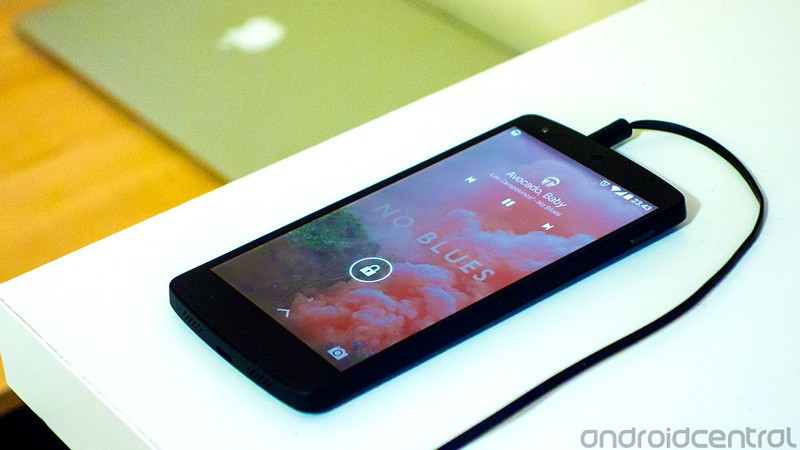
For obvious reasons it's also a great OS for those who've already fully bought into the Google ecosystem. Putting Google Now on the home screen makes a ton of sense — Android home screens in general are slowly becoming more about delivering relevant, context-sensitive info and less about a traditional grid of apps. That said, I'm not using Google Now much more on the Nexus than I am on other devices. Same deal with the new dialer app and Google Caller ID — useful additions, sure, but not necessarily features I miss when I switch phones.
When it comes to storage, I'd always recommend you stump up the extra cash for the 32GB model, for the same reason I recommended against picking up the 8GB Nexus 4 a year ago. Apps are getting bigger all the time (especially if you're using ART), and though streaming services like Google Play Music are better than ever, you'll still save battery power and data by playing back music from a local cache. And the N5 is still a bargain even at $399. On my 16GB model — the only one available on launch day in the UK — I'm already down to 5GB remaining of the available 12 and change. That's not a small amount of space, but the fact that I'm already using more than half my storage without really trying is a bit unnerving.
An improved but imperfect camera experience
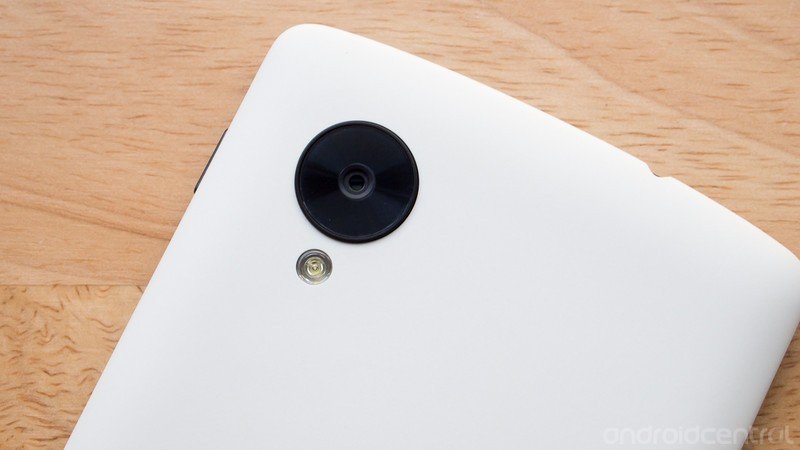
The Nexus 5 launched with a slightly wonky camera, and it still seems slightly off-balance even after the improvements of the Android 4.4.1 and 4.4.2 updates. Let's preface all of this by saying the Nexus 5 still has a pretty good camera — that was the case at launch, and the same is true today. But it's still one of the weirder smartphone cameras I've used, and undoubtedly one of the less consistent. That's mainly down to the poor autofocus — even on the latest firmware, the camera app will often inexplicably fail to focus on objects directly in front of it, and that's especially true of night-time photography.
HDR+ remains the saving grace of the Nexus 5's camera software.
HDR+ remains the saving grace of the Nexus 5's camera software. It's possible to get some stunning shots using this shooting mode, which combines multiple exposures to produce clearer image. And the difference when using HDR+ isn't limited to dynamic range. Often HDR+ produces more accurate colors, sharper edges and less noisy shots, too. Unless you're shooting a fast-moving subject, there's really reason not to use HDR+.
The Android 4.4.1 update improved the camera experience to a point — images shot in auto mode are captured faster and no longer look as washed out. And HDR+ captures also complete faster, while giving you an on-screen progress wheel. But in order to take full advantage of the Nexus 5's camera hardware it seems like more needs to be done, starting with an overhaul of the clunky stock Android camera UI.
That being said, we've been generally pleased with the quality of images we're getting from the Nexus 5, and we can't deny that it's a huge improvement on its predecessor in this area.







The Achilles' heel
The Nexus 5's 2,300mAh battery is good enough — except for when it isn't. Most of the time the non-removable battery provides enough juice to get through a full day of use, but problems arise with any kind of heavy use for extended periods of time. This became particularly apparent at the recent CES show in Las Vegas.
With heavier use, the Nexus 5 just isn't as dependable as the competition.
At CES I used the Nexus 5 as a second phone on AT&T HSPA+ alongside my main device, a Sony Xperia Z1 on T-Mobile LTE. Now, CES is a notoriously hostile radio environment, which can take its toll on smartphone batteries. But even then I was alarmed by how quickly the Nexus's battery depleted — often down to below 80 percent before I'd finished breakfast, and into the danger zone of 20-or-so percent before the end of the day. By comparison the Xperia Z1 held up remarkably well, usually with heavier use, thanks to its larger-capacity battery and array of power-saving features. The Z1 would usually finish a day of tradeshow duties with between 40 and 50 percent remaining, whereas it seemed the Nexus would sit in my pocket and drain its battery keeping the usual notifications ticking over.
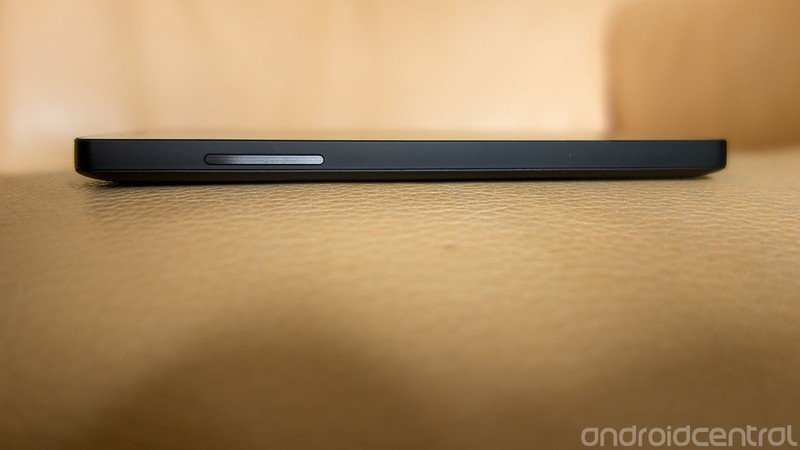
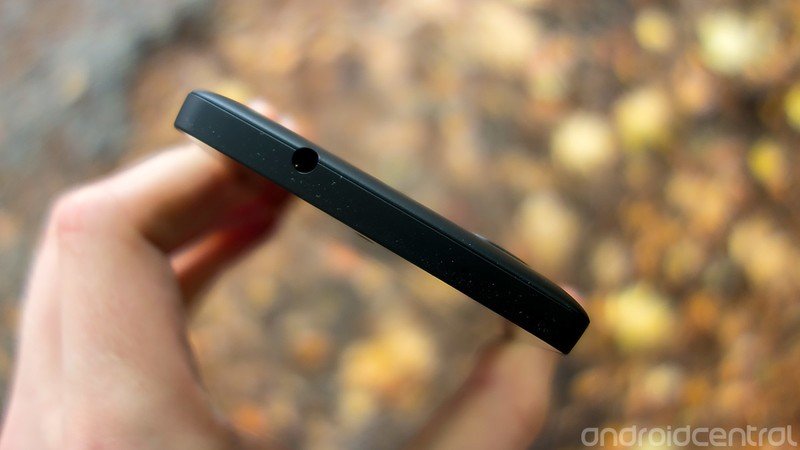
CES is a fringe case, and most of the time I'm not hammering my phone's battery anywhere near as much. But for those times when I am, the Nexus just isn't as dependable as the competition. And that makes it seem like Google and LG skimped on this crucial hardware point.
If the Nexus 5 came with a more substantial battery — say, the 3,000mAh unit used in LG's own G2 — it'd be an easy recommendation for just about anyone. As it stands it's a great buy, but one with weaker battery performance than we'd like.
So is it still worth buying?
The Nexus 5 remains excellent value for money, and a great phone in general. But there are compromises to be made.
Selling for £300 or $350 in January 2014, the Nexus 5 remains excellent value for money, and a great smartphone in general. But in return you'll have to compromise a little more than you would buying a standard high-end Android phone from any of the big manufacturers. You'll get an awesomely fast phone with an excellent software experience, a good (if slightly janky) camera and so-so battery life. And if you've reached the end of this article, you probably already know whether that's a fair trade-off for you.
Phones will come and go in the year ahead, but the Nexus will continue to offer a few unique value points in 2014. Firstly, "pure" Android — still something of a rarity even in a world of Google Play editions — and fast updates to Lemon Meringue Pie, or Lollipop, or whatever nickname the next version of Android goes by. For certain types of buyers, these things, together with the N5's specs and price tag, will make it irresistible. For others, a different, and perhaps more favorable set of compromises will be offered by 2014's flagship smartphones.
Nexus 5 owners, how have you been finding the phone? Let us know down in the comments!

Alex was with Android Central for over a decade, producing written and video content for the site, and served as global Executive Editor from 2016 to 2022.
